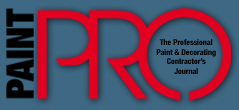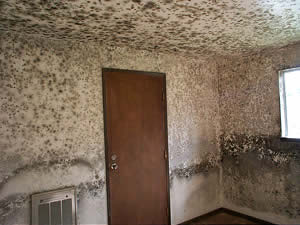
Mold and Mildew
If you can see the mold growth, sampling isn't necessary. However, when it is, EPA recommends the sampling be done by a professional familiar with the proper protocols and methods.
by Stacey Enesey Klemenc
, out of 100,000 different types of molds only a handful are toxic. Most types routinely found aren’t hazardous to healthy folks.
According to the Environmental Protection Agency, if a moldy area is less than about 10 square feet, in most cases you can handle the clean-up job yourself if you follow a few common-sense guidelines: avoid breathing the mold spores (wear an N-95 respirator), wear long rubber gloves and wear goggles that don’t have any ventilation holes.
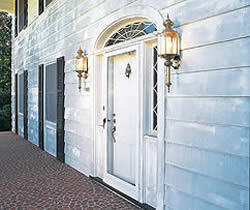 |
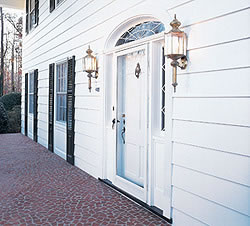 |
| Long after Hurrican Hugo slammed into North Carolina back in 1989, residents were still dealing with its wrath in the form of mildew. Owners of this house in Lincoln County finally combated the problem in 1999 by hiring a painter who used Zinsser's mildew killer to clean the home and then applied two coats of its mildew-proof house and trim paint. Since then, there have been no signs of mildew anywhere the paint was applied and the homeowners report they no longer have to wash the house annually. Interestingly, in areas that were difficult to reach, such as behind a rain gutter, there was mildew growth. But, noted the contractor, David Woodruff of Woodruff's Wallpapering and Painting in Meridian, North Carolina, "The mildew growth stops where the paint film begins." |
In most cases, the EPA notes, if you can see the mold growth, sampling isn’t necessary. However, when it is, EPA recommends the sampling be done by a professional familiar with the proper protocols and methods. Such sampling can cost anywhere from $100 to $1,500 depending on the situation.
If you don’t think hiring a properly certified hygienist to observe the mold and determine the extent of the problem is necessary, there are several laboratories, such as Aerotech Laboratories in Phoenix, Ariz., where you can send a mold sample for analysis. According to lab spokesperson Debra Short, if you simply want to know what kind of mold you’re dealing with you can take a piece of ordinary clear tape (nothing cloudy) about three inches long and stick it against a surface in the concerned area. Pull it off and stick it to the inside of a zipped baggie and mail it to the lab. It’ll cost you $30 to find out what genus of fungi you’re dealing with and get a count of the viable and nonviable spores. Generally, the turn-around time is two days.
Regardless of its genus, there’s no denying that mildew is a sore sight for eyes and controlling it is a priority on most painters’ lists.
John G. Stauffer, technical director of Rohm and Haas Paint Quality Institute, has provided technical guidance to paint industry personnel for almost 30 years. He says it’s imperative to start with a clean surface before painting because “If you apply a paint over existing mildew, it will make its way through and continue to grow.”
Most industry experts agree that a 3:1 mixture of water and bleach will kill existing mildew. Stauffer recommends applying the mixture to the infected area plus a one-foot margin and leaving it on for at least 20 minutes, adding more if the surface dries before then. Then pressure wash thoroughly with plain water.
To minimize the chance of mildew growth, Stauffer says there are several things you can do:
- Use a quality latex paint, as oil- and alkyd-based paints tend to be less resistant to mildew. The higher the quality, the more mildewcide it is likely to contain.
- Choose a satin or semi-gloss finish, rather than flat, as flat paint is more porous and mildew anchors to it better.
- If possible, go with a dark paint because darker colors dry out faster than lighter colors after a rain or dewfall. The quicker a surface dries, the less susceptible it is to mildew growth.
- Don’t paint under conditions that will make the paint dry too quickly as the film formation can be compromised. The quicker it dries, the more porous the film becomes.
- Be sure to put all coats on as heavy as possible to help keep mildew away from the organic material in the surface being painted. Two coats will perform better than one.
- Avoid painting in windy weather, especially if there’s mildew on nearby surfaces. If feasible, clean nearby mildewed surfaces, too, before painting to protect against wind-blown spores.
- Consider spray-painting rather than brushing or rolling since the latter can create grooves that can trap nutrients for mildew.
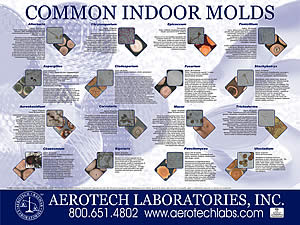 |
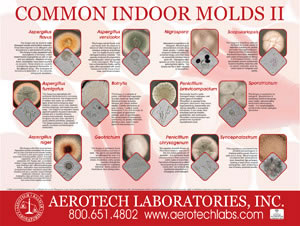 |
| To order a free copy of the Aerotech Laboratories poster seen here, e-mail info@aerotechlabs.com with your complete mailing address. In the subject line, type "Common Indoor Molds II." There are also limited copies of the preceeding poster, "Common Indoor Molds." |
“Most mildew problems occur because of poor ventilation, excessive moisture/humidity or a combination of both,” says Andrew Kinnen, product manager, architectural marketing for The Sherwin-Williams Co. “Aside from being aesthetically undesirable, mildew also can create an odor and can even damage the coating itself.”
The EPA maintains that the key to mold control is moisture control. Unless the water problem is fixed, the mold will keep returning. Mildew should be considered a symptom — when it exists, you must search out the cause.
Mold grows better under limited light conditions, Stauffer points out, and that’s why it’s most prevalent on the sun-starved north and east sides of buildings and on areas that are shaded under eaves, bushes or trees. Whereas no area is really exempt from mold and mildew, the situation is most problematic in the Deep South, Pacific Northwest, along the coast and tropical regions like Hawaii, south Florida and Puerto Rico.
However, “Mold and mildew on the interior have no geographic boundaries. It all depends on the conditions inside the home. You’ll get mildew growth if there is a lot of moisture, little airflow and a food source,” says Frank Glowacki, brand manager of specialty paints for Zinsser Co.
For food, it ingests dirt, carbohydrates, cellulose, phosphates, wood and even paint (oil-based in particular). According to Florida-based Coronado Paint’s Technical Services Department, mildew grows faster on exterior low-sheen alkyd-based products than on semi-gloss or gloss finishes. It grows even more quickly if the coating contains linseed oil.
“Any organic material can be a food source,” Glowacki adds. “Applying cellulose paint is like putting out a buffet for mold and mildew.” Many times, however, if you see mildew growing on paint, the paint is actually micro cracking and the mildew is feeding on the substrate, Stauffer notes.
“Because primers seal surfaces and sealed surfaces attract and absorb less water,” Kinnen says, “primers can be a good bet in the battle against mildew.”
Joe Vanderdrink, district sales manager for Vista Paint in Orange County, California, suggests using a high-quality acrylic primer to better resist mildew-and the thicker the better. “If you brush on one coat, there’s not enough mil coat to fight it off. It’s like buying a used tire; it’s not going to last very long.”
Primers add another degree of separation, Stauffer agrees. “Most contain a mildewcide and have low porosity, like a satin or semi-gloss, and there’s less likelihood that spores can make it through the film into the substrate.” A good choice for the interior is a latex stain-blocking primer because it has a high degree of adhesion and is low in porosity, he adds.
Mildewcides, which are not effective against algae, gradually leach out of paint and onto the film’s surface when exposed to rain and dew. So it only makes sense that the more paint on a surface the longer the surface will be protected. Normally, it takes two to three years before all the mildewcide has leached out of the film.
Zinsser Co., a coatings manufacturer based in Sommerset, New Jersey, has been working hard since the late ’80s to develop a line of specialty products for the long-term prevention of mold and mildew, says Glowacki.
In 1991, the company introduced Perma-White Mildew-Proof Bathroom Paint, “the first mildew-proof paint on the market,” he says. Designed to be used indoors wherever mildew or high humidity are problems, this fast-drying paint will bond to glossy surfaces without sanding. “It’ll stick to anything,” Glowacki says, “even old varnish if it’s clean.” In 1998, Zinsser added a concentrated cleaner that kills mold and mildew on contact. Designed to be mixed with bleach and water, “Jomax has a unique formula with a bleach activator that allows bleach to work exceptionally well with smaller amounts than traditionally needed,” Glowacki explains. onsequently, it can be used near plants and shrubs without damaging them.
That same year, the company added a Perma-White exterior paint, recently renamed Perma-White Mildew-Proof House & Trim Paint, to its line. Like its interior cousin, the acrylic paint is self-priming and is guaranteed to be mildew-free for five years. “This gave us a team of products,” Glowacki says, to “take it off and keep it off.” The line also includes Add-2, a post-additive mildewcide for interior or exterior paint, and Zinsser Plus, a commercial wall covering system that consists of a low-odor mildew-proof primer and adhesive that can be applied while the building is occupied. And just introduced this year is WaterTite, a mildew-proof waterproofing paint for basements and masonry, inside and outside, above and below grade. “If you look at EPA guidelines, they’ll tell you moisture control is the key to reducing mold growth,” notes Glowacki. “On top of that, if you lessen or remove the food source, the mold and mildew will die. That’s the logic behind Zinsser products. We’re interested in developing long-term mold and mildew preventative products for both inside and outside the home. Zinsser views this as an important niche. We used to think of it as a small but important niche; now the small is gone.” 
|
